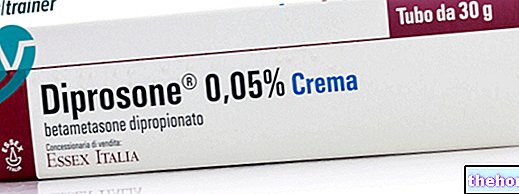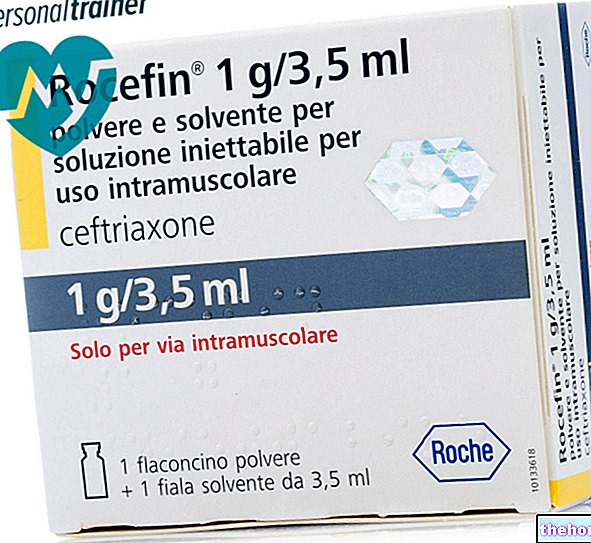Active ingredients: Diazepam
Ansiolin 5 mg film-coated tablets
Ansiolin 5 mg / ml oral drops, solution
Indications Why is Ansiolin used? What is it for?
PHARMACOTHERAPEUTIC CATEGORY
Benzodiazepine derivatives
THERAPEUTIC INDICATIONS
Anxiety, tension and other somatic or psychiatric manifestations associated with anxiety syndrome, Insomnia. Benzodiazepines are only indicated when the disorder is severe, disabling, or makes the subject very uncomfortable.
Contraindications When Ansiolin should not be used
Myasthenia gravis. Hypersensitivity to benzodiazepines. Severe respiratory insufficiency. Severe hepatic insufficiency. Sleep apnea syndrome.
Precautions for use What you need to know before taking Ansiolin
Due to the highly variable reactivity to psychotropic drugs, the dosage of Ansiolin should be set within prudent limits in elderly patients, in debilitated subjects and in carriers of organic brain diseases (especially atherosclerotic) or cardiorespiratory insufficiency. If associated with centrally active drugs, such as neuroleptics, tranquilizers, antidepressants, hypnotics, analgesics and anesthetics, ANSIOLIN can strengthen their sedative action; this enhancement is sometimes used for therapeutic purposes.
Predisposed subjects, if treated with diazepam at high doses and for prolonged periods, may be addictive, as occurs with other drugs with hypnotic, sedative and ataraxic activity (see Interactions).
In case of prolonged treatment, it is advisable to carry out checks on the blood picture and liver function.
Tolerance
Some loss of efficacy to the hypnotic effects of benzodiazepines may develop after repeated use for a few weeks.
Dependence
The use of benzodiazepines can lead to the development of physical and psychological dependence on these drugs. The risk of dependence increases with dose and duration of treatment, and is greater in patients with a history of drug or alcohol abuse.
Once the physical dependence has developed, the abrupt termination of treatment will be accompanied by withdrawal symptoms. These can consist of headache, body aches, extreme anxiety, tension, restlessness, confusion and irritability. In severe cases, the following symptoms may occur: derealization, depersonalization, hyperacusis, numbness and tingling of the extremities, hypersensitivity to light, noise and physical contact, hallucinations or seizures.
Rebound insomnia and anxiety: A transient syndrome in which symptoms that led to treatment with benzodiazepines recur in an aggravated form may occur on discontinuation of treatment. It may be accompanied by other reactions, including mood changes, anxiety, restlessness or disturbances As the risk of withdrawal or rebound symptoms is greater after abrupt discontinuation of treatment, a gradual decrease in dosage is suggested.
Duration of treatment
The duration of treatment should be as short as possible (see posology) depending on the indication, but should not exceed four weeks for insomnia and eight to twelve weeks for anxiety, including a gradual withdrawal period. "extension of therapy beyond these periods should not occur without re-evaluation of the clinical situation. It may be helpful to inform the patient when treatment is started that it will be of limited duration and to explain precisely how the dosage should be progressively decreased. It is also important that the patient is informed of the possibility of rebound phenomena, thus minimizing anxiety about these symptoms should they occur when the drug is discontinued.
There is evidence that, in the case of benzodiazepines with a short duration of action, withdrawal symptoms may become manifest within the dosing interval between doses, particularly for high doses. When using benzodiazepines with a long duration of action, it is important to warn the patient that abrupt change to a benzodiazepine with a short duration of action is inadvisable, as withdrawal symptoms may occur.
Amnesia
Benzodiazepines can induce antegrade amnesia. This occurs most often several hours after ingestion of the drug and, therefore, to reduce the risk it should be ensured that patients can have 7-8 hours of uninterrupted sleep (see Side Effects).
Psychiatric and paradoxical reactions
When benzodiazepines are used it is known that reactions such as restlessness, agitation, irritability, aggression, disappointment, anger, nightmares, hallucinations, psychosis, behavioral changes can occur. Should this occur, the use of the medicinal product should be discontinued. These reactions are more frequent in children and the elderly.
Specific groups of patients
Benzodiazepines should not be given to children without careful consideration of the actual need for treatment; the duration of treatment should be as short as possible. The elderly should take a reduced dose (see posology). Likewise, a lower dose is suggested for patients with chronic respiratory insufficiency due to the risk of respiratory depression. Benzodiazepines are not indicated in patients with severe hepatic insufficiency as they can precipitate encephalopathy. Benzodiazepines are not recommended for the primary treatment of psychotic illness. Benzodiazepines should not be used alone to treat depression or anxiety associated with depression (suicide can be precipitated in such patients). Benzodiazepines should be used with extreme caution in patients with a history of drug or alcohol abuse.
Interactions Which drugs or foods can modify the effect of Ansiolin
Diazepam enhances pentobarbital sleep and modifies cortisone levels in the rat.
Concomitant intake with alcohol should be avoided. The sedative effect may be enhanced when the medicinal product is taken in conjunction with alcohol. This adversely affects the ability to drive or use machines.
Combination with CNS depressant drugs: the central depressive effect may be enhanced in cases of concomitant use with antipsychotics (neuroleptics), hypnotics, anxiolytics / sedatives, antidepressants, narcotic analgesics, antiepileptics, anesthetics and sedative antihistamines. narcotics can occur increased euphoria leading to an increase in psychic dependence.
Compounds that inhibit certain liver enzymes (especially cytochrome P450) may increase the activity of benzodiazepines. To a lesser extent, this also applies to benzodiazepines which are metabolized only by conjugation.
Warnings It is important to know that:
The association with other psychotropic drugs requires particular caution and vigilance on the part of the physician to avoid unexpected undesirable effects from interaction.
Ability to drive and use machines
Sedation, amnesia, impaired concentration and muscle function can adversely affect the ability to drive and use machines. If sleep duration has been insufficient, the likelihood of impaired alertness may be increased (see interactions).
In relation to the methods of use, doses and individual sensitivity Ansiolin, like other drugs of the same type of action, can influence the psychomotor reaction capacity by reducing, for example, the ability to drive a vehicle or altering individual behavior. in road traffic or in the execution of delicate work activities. Patients should be advised that they should not drive a vehicle during the day, or at least for 12 hours following the administration of Ansiolin.
Pregnancy and breastfeeding
If the product is prescribed to a woman of childbearing age, she should contact her doctor, both if she intends to become pregnant, and if she suspects that she is pregnant, regarding discontinuation of the drug; if, for serious medical reasons, the product is administered during the last period of pregnancy or during labor at high doses, effects on the newborn may occur such as hypothermia, hypotonia and moderate respiratory depression due to the pharmacological action of the drug.
Additionally, infants born to mothers who have taken benzodiazepines chronically during late pregnancy may develop physical dependence and may be at some risk for developing withdrawal symptoms in the postnatal period.
Do not administer in the first trimester of pregnancy; in the further period the drug should be administered only in case of real need and under direct medical supervision. Since benzodiazepines are excreted in breast milk, they should not be administered to breastfeeding mothers.
Dosage and method of use How to use Ansiolin: Dosage
Film-coated tablets
Adults: 1 to 3 tablets a day, or more, according to the doctor's judgment.
Oral drops, solution
Adults: 20 drops, 1-3 times a day, or more, according to the doctor's judgment.
Children: up to 3 years: 4-24 drops, equal to 1-6 mg of diazepam, per day. from 4 to 14 years: 16-48 drops, equal to 4-12 mg of diazepam, per day.
The drops can be diluted in a small amount of liquid.
How to use the dropper bottle: to dispense the correct dose of drug it is necessary to hold the bottle upright with the opening facing down. If the liquid does not go down, it is advisable to shake the bottle or turn it upside down several times and repeat the dispensing operation as indicated above.
In the treatment of elderly patients the posology must be carefully established by the doctor who will have to evaluate a possible reduction of the dosages indicated above.
Anxiety, tension and other somatic or psychiatric manifestations with anxiety syndrome Treatment should be as short as possible. The patient should be re-evaluated regularly and the need for continued treatment should be carefully considered, particularly if the patient is symptom-free. The overall duration of treatment should generally not exceed 8-12 weeks, including a gradual withdrawal period.
In certain cases, extension beyond the maximum treatment period may be necessary, in which case this should not be done without reassessment of the patient's condition.
Insomnia
Treatment should be as short as possible. The duration of treatment generally ranges from a few days to two weeks, up to a maximum of four weeks, including a gradual withdrawal period.
In certain cases, extension beyond the maximum treatment period may be necessary; if so, it should not occur without reassessment of the patient's condition. Treatment should be started with the lowest dose.
The maximum dose should not be exceeded
In the treatment of insomnia the drug should be taken just before going to bed.
The patient should be monitored regularly at the start of treatment to decrease the dose or frequency of intake if necessary to prevent overdose due to accumulation.
Overdose What to do if you have taken an overdose of Ansiolin
As with other benzodiazepines, an overdose is not expected to be life-threatening unless concomitant other CNS depressants (including alcohol) are taken.
In the treatment of overdose of any drug, the possibility that other substances have been taken at the same time should be considered.
Following an overdose of oral benzodiazepines, vomiting should be induced (within one "hour) if the patient is conscious or gastric lavage with respiratory protection undertaken if the patient is unconscious.
If no improvement is observed with stomach emptying, activated charcoal should be given to reduce absorption. Special attention should be paid to respiratory and cardiovascular functions in emergency therapy. Overdosage of benzodiazepines usually results in varying degrees of central nervous system depression ranging from clouding to coma.
In mild cases, symptoms include drowsiness, mental confusion, and lethargy. In severe cases, symptoms may include ataxia, hypotonia, hypotension, respiratory depression, rarely coma, and very rarely death. "Flumazenil" can be useful as an antidote.
The therapies to be instituted in case of oral administration of the product consist of an immediate gastric lavage and administration of noradrenaline to combat hypotension.
Side Effects What are the side effects of Ansiolin
Drowsiness, dulling of emotions, decreased alertness, confusion, fatigue, headache, dizziness, muscle weakness, ataxia, double vision. These phenomena occur mainly at the start of therapy and usually disappear with subsequent administrations. Other adverse reactions have occasionally been reported including: gastrointestinal disturbances, change in libido and skin reactions.
Amnesia
Anterograde amnesia can also occur at therapeutic dosages, the risk increases at higher dosages. Amnesic effects may be associated with behavioral changes (see special warnings and precautions).
Depression
During the use of benzodiazepines a pre-existing depressive state can be unmasked. Benzodiazepines or benzodiazepine-like compounds can cause reactions such as: restlessness, agitation, irritability, aggression, disappointment, anger, nightmares, hallucinations, psychosis, behavioral changes.
Such reactions can be quite severe. They are more likely in children and the elderly.
Dependence
The use of benzodiazepines (even at therapeutic doses) can lead to the development of physical dependence: discontinuation of therapy can cause rebound or withdrawal phenomena (see special warnings and precautions). Psychic dependence may occur. Abuse has been reported. of benzodiazepines.
If undesirable effects occur - even different from those described - the patient is invited to communicate them to their doctor or pharmacist.
Expiry and Retention
Store at a temperature not exceeding 30 ° C
The expiry date indicated refers to the product in intact and correctly stored packaging.
WARNING: do not use the medicine after the expiry date indicated on the package.
Keep out of the reach and sight of children
Composition and pharmaceutical form
COMPOSITION
Film-coated tablets
One tablet contains:
Active ingredient: Diazepam 5 mg.
Excipients: Lactose, Maize starch, Magnesium stearate, Methylhydroxypropylcellulose, Anhydrous glucose, Propylene glycol, Polyethylene glycol.
Oral drops, solution
100 ml of solution contain:
Active ingredient: Diazepam 0.500 g.
Excipients: Alcohol, Propylene glycol, Ammonium glycyrrhizinate, Saccharin, Sodium hydroxide, Wild cherry flavor, Purified water.
PHARMACEUTICAL FORM AND PACKAGING
Film-coated tablets
"5 mg film-coated tablets" 40 tablets
Oral drops, solution
"5 mg / ml oral drops, solution" 1 bottle of 30 ml
1 ml solution is equal to 20 drops and contains 5 mg of Diazepam.
Source Package Leaflet: AIFA (Italian Medicines Agency). Content published in January 2016. The information present may not be up-to-date.
To have access to the most up-to-date version, it is advisable to access the AIFA (Italian Medicines Agency) website. Disclaimer and useful information.
01.0 NAME OF THE MEDICINAL PRODUCT
ANSIOLIN
02.0 QUALITATIVE AND QUANTITATIVE COMPOSITION
Film-coated tablets
One tablet contains: Diazepam 5 mg.
Oral drops, solution
100 ml of solution contain: Diazepam 0.500 g.
For excipients, see 6.1.
03.0 PHARMACEUTICAL FORM
Film-coated tablets - Oral drops, solution.
04.0 CLINICAL INFORMATION
04.1 Therapeutic indications
Anxiety, tension and other somatic or psychiatric manifestations associated with anxiety syndrome, Insomnia.
Benzodiazepines are only indicated when the disorder is severe, disabling, or makes the subject very uncomfortable.
04.2 Posology and method of administration
Film-coated tablets
Adults: 1 to 3 tablets per day, or more according to the doctor's judgment.
Oral drops, solution
Adults: 20 drops, 1-3 times a day, or more, according to the judgment of the Doctor.
Children: up to 3 years: 4-24 drops, equal to 1-6 mg of diazepam, per day.
from 4 to 14 years: 16-48 drops, equal to 4-12 mg of diazepam, per day.
The drops can be diluted in a small amount of liquid.
In the treatment of elderly patients, the dosage must be carefully established by the Doctor who will have to evaluate a possible reduction of the dosages indicated above.
Anxiety, tension and other somatic or psychiatric manifestations associated with anxiety syndrome
Treatment should be as short as possible. The patient should be re-evaluated regularly and the need for continued treatment should be carefully considered, particularly if the patient is symptom-free. The overall duration of treatment should generally not exceed 8-12 weeks, including a gradual withdrawal period.
In certain cases, extension beyond the maximum treatment period may be necessary, in which case this should not be done without reassessment of the patient's condition.
Insomnia
Treatment should be as short as possible. The duration of treatment generally ranges from a few days to two weeks, up to a maximum of four weeks, including a gradual withdrawal period.
In certain cases, extension beyond the maximum treatment period may be necessary; if so, it should not take place without reassessment of the patient's condition.
Treatment should be started with the lowest dose.
The maximum dose should not be exceeded.
In the treatment of insomnia the drug should be taken just before going to bed.
The patient should be monitored regularly at the start of treatment to decrease the dose or frequency of intake if necessary to prevent overdose due to accumulation.
04.3 Contraindications
Myasthenia gravis. Hypersensitivity to benzodiazepines. Severe respiratory insufficiency. Severe hepatic insufficiency. Sleep apnea syndrome.
04.4 Special warnings and appropriate precautions for use
Special warnings
The association with other psychotropic drugs requires particular caution and vigilance on the part of the physician to avoid unexpected undesirable effects from interaction.
Appropriate precautions for use
If associated with centrally active drugs, such as neuroleptics, tranquilizers, antidepressants, hypnotics, analgesics and anesthetics, ANSIOLIN can strengthen their sedative action; this enhancement is sometimes used for therapeutic purposes.
Predisposed subjects, if treated with diazepam at high doses and for prolonged periods, may be addictive, as occurs with other drugs with hypnotic, sedative and ataraxic activity (see Interactions).
In case of prolonged treatment, it is advisable to carry out checks on the blood picture and liver function.
Tolerance
Some loss of efficacy to the hypnotic effects of benzodiazepines may develop after repeated use for a few weeks.
Dependence
The use of benzodiazepines can lead to the development of physical and psychological dependence on these drugs. The risk of dependence increases with dose and duration of treatment, and is greater in patients with a history of drug or alcohol abuse.
Once the physical dependence has developed, the abrupt termination of treatment will be accompanied by withdrawal symptoms. These can consist of headache, body aches, extreme anxiety, tension, restlessness, confusion and irritability.In severe cases, the following symptoms may occur: derealization, depersonalization, hyperacusis, numbness and tingling of the extremities, hypersensitivity to light, noise and physical contact, hallucinations or seizures.
Rebound insomnia and anxiety: A transient syndrome in which symptoms that led to treatment with benzodiazepines recur in an aggravated form may occur on discontinuation of treatment. It may be accompanied by other reactions, including mood changes, anxiety, restlessness or disturbances As the risk of withdrawal or rebound symptoms is greater after abrupt discontinuation of treatment, a gradual decrease in dosage is suggested.
Duration of treatment
The duration of treatment should be as short as possible (see posology) depending on the indication, but should not exceed four weeks for insomnia and eight to twelve weeks for anxiety, including a gradual withdrawal period. "extension of therapy beyond these periods should not occur without re-evaluation of the clinical situation. It may be helpful to inform the patient when treatment is started that it will be of limited duration and to explain precisely how the dosage should be progressively decreased.
It is also important that the patient is informed of the possibility of rebound phenomena, thus minimizing anxiety about these symptoms should they occur when the drug is discontinued.
There is evidence that, in the case of benzodiazepines with a short duration of action, withdrawal symptoms may become manifest within the dosing interval between doses, particularly for high doses.
When using benzodiazepines with a long duration of action, it is important to warn the patient that sudden change to a benzodiazepine with a short duration of action is not recommended, as withdrawal symptoms may occur.
Amnesia
Benzodiazepines can induce antegrade amnesia. This occurs most often several hours after ingestion of the drug and, therefore, to reduce the risk it should be ensured that patients can have 7-8 hours of uninterrupted sleep (see Side Effects).
Psychiatric and paradoxical reactions
When benzodiazepines are used it is known that reactions such as restlessness, agitation, irritability, aggression, disappointment, anger, nightmares, hallucinations, psychosis, behavioral changes can occur. Should this occur, the use of the medicinal product should be discontinued. These reactions are more frequent in children and the elderly.
Specific groups of patients
Benzodiazepines should not be given to children without careful consideration of the actual need for treatment; the duration of treatment should be as short as possible. The elderly should take a reduced dose (see posology). Likewise, a lower dose is suggested for patients with chronic respiratory insufficiency due to the risk of respiratory depression. Benzodiazepines are not indicated in patients with severe hepatic insufficiency as they can precipitate encephalopathy. Benzodiazepines are not recommended for the primary treatment of psychotic illness. Benzodiazepines should not be used alone to treat depression or anxiety associated with depression (suicide can be precipitated in such patients). Benzodiazepines should be used with extreme caution in patients with a history of drug or alcohol abuse.
04.5 Interactions with other medicinal products and other forms of interaction
Diazepam enhances pentobarbital sleep and modifies cortisone levels in the rat.
Concomitant intake with alcohol should be avoided. The sedative effect may be enhanced when the medicinal product is taken in conjunction with alcohol. This adversely affects the ability to drive or use machines.
Combination with CNS depressant drugs: the central depressive effect may be enhanced in cases of concomitant use with antipsychotics (neuroleptics), hypnotics, anxiolytics / sedatives, antidepressants, narcotic analgesics, antiepileptics, anesthetics and sedative antihistamines. narcotics can occur increased euphoria leading to an increase in psychic dependence.
Compounds that inhibit certain liver enzymes (especially cytochrome P450) may increase the activity of benzodiazepines. To a lesser extent, this also applies to benzodiazepines which are metabolized only by conjugation.
04.6 Pregnancy and lactation
If the product is prescribed to a woman of childbearing potential, she should contact her doctor, both if she intends to become pregnant, and if she suspects that she is pregnant, regarding discontinuation of the medicine.
If, for serious medical reasons, the product is administered during the last period of pregnancy or during labor at high doses, effects on the newborn may occur such as hypothermia, hypotonia and moderate respiratory depression due to the pharmacological action of the drug.
Additionally, infants born to mothers who have taken benzodiazepines chronically during late pregnancy may develop physical dependence and may be at some risk for developing withdrawal symptoms in the postnatal period.
Do not administer in the first trimester of pregnancy. In the further period, the drug must be administered only in case of real need and under the direct supervision of the Doctor.
Since benzodiazepines are excreted in breast milk, they should not be given to breastfeeding mothers.
04.7 Effects on ability to drive and use machines
Sedation, amnesia, impaired concentration and muscle function can adversely affect the ability to drive and use machines. If sleep duration has been insufficient, the likelihood of impaired alertness may be increased (see interactions).
In relation to the methods of use, doses and individual sensitivity, ANSIOLIN, like other drugs of the same type of action, can influence the psychomotor reaction capacity by reducing, for example, the ability to drive a vehicle or altering individual behavior. in road traffic or in the execution of delicate work activities.
Patients should be advised that they should not drive a vehicle during the day, or at least 12 hours after administration of ANSIOLIN.
04.8 Undesirable effects
Drowsiness, dulling of emotions, decreased alertness, confusion, fatigue, headache, dizziness, muscle weakness, ataxia, double vision. These phenomena occur mainly at the start of therapy and usually disappear with subsequent administrations. Other adverse reactions have occasionally been reported including: gastrointestinal disturbances, change in libido and skin reactions.
Amnesia
Anterograde amnesia can also occur at therapeutic dosages, the risk increases at higher dosages. Amnesic effects may be associated with behavioral changes (see special warnings and precautions).
Depression
A pre-existing depressive state may be unmasked during the use of benzodiazepines.
Benzodiazepines or benzodiazepine-like compounds can cause reactions such as: restlessness, agitation, irritability, aggression, disappointment, anger, nightmares, hallucinations, psychosis, behavioral changes.
Such reactions can be quite severe. They are more likely in children and the elderly.
Dependence
The use of benzodiazepines (even at therapeutic doses) can lead to the development of physical dependence: discontinuation of therapy can cause rebound or withdrawal phenomena (see special warnings and precautions). Psychic dependence may occur. Abuse has been reported. of benzodiazepines.
04.9 Overdose
As with other benzodiazepines, an overdose is not expected to be life-threatening unless concomitant other CNS depressants (including alcohol) are taken.
In the treatment of overdose of any drug, the possibility that other substances have been taken at the same time should be considered.
Following an overdose of oral benzodiazepines, vomiting should be induced (within one "hour) if the patient is conscious or gastric lavage with respiratory protection undertaken if the patient is unconscious.
If no improvement is observed with stomach emptying, activated charcoal should be given to reduce absorption. Special attention should be paid to respiratory and cardiovascular functions in emergency therapy. Overdosage of benzodiazepines usually results in varying degrees of central nervous system depression ranging from clouding to coma. In mild cases, symptoms include drowsiness, mental confusion, and lethargy.
In severe cases, symptoms may include ataxia, hypotonia, hypotension, respiratory depression, rarely coma, and very rarely death. "Flumazenil" can be useful as an antidote.
The therapies to be instituted in case of oral administration of the product consist of an immediate gastric lavage and administration of noradrenaline to combat hypotension.
05.0 PHARMACOLOGICAL PROPERTIES
05.1 Pharmacodynamic properties
Pharmacotherapeutic group: Psycholeptics, Anxiolytics, Benzodiazepine derivatives, ATC code: N05BA01.
Diazepam has anxiolytic, muscle relaxant, anticonvulsant and sedative properties. It acts mainly at the level of the limbic system, the thalamus and the hypothalamus.
05.2 Pharmacokinetic properties
Absorption of diazepam is rapid and complete by the oral route while it is slow and incomplete by the intramuscular route.
The plasma half-life is 21-37 hours. The plasma protein binding is approximately 97%. Excretion is via the kidney.
Diazepam passes the blood-brain and placental barriers and into breast milk.
05.3 Preclinical safety data
Diazepam has a LD50 p.o. of 720 mg / kg in mice and 1240 mg / kg in rats: i.v. of 1 mg / kg in mice. Diazepam has no particular toxic effects in repeated dose toxicity tests with daily doses up to 320 mg / kg in rats and up to
40 mg / kg in dogs. Diazepam is not teratogenic in rats and rabbits.
06.0 PHARMACEUTICAL INFORMATION
06.1 Excipients
Film-coated tablets
Lactose - Corn starch - Magnesium stearate - Methylhydroxypropylcellulose - Anhydrous glucose - Propylene glycol - Polyethylene glycol 400.
Oral drops, solution
Alcohol - Propylene glycol - Ammonium glycyrrhizinate - Saccharin - Sodium hydroxide - Wild cherry flavor - Purified water.
06.2 Incompatibility
Phenothiazines, narcotics, MAO inhibitors can potentiate the effect of diazepam.
06.3 Period of validity
5 years.
06.4 Special precautions for storage
Store at a temperature not exceeding 30 ° C.
06.5 Nature of the immediate packaging and contents of the package
Film-coated tablets
Blister packs of suitable shape and size placed in cartons are used, together with the illustrative leaflet.
"5 mg film-coated tablets" 40 tablets
Oral drops, solution
Dark glass containers with droppers are used, closed with an aluminum safety cap, inserted together with the package leaflet in cardboard boxes.
"5 mg / ml oral drops, solution" 1 bottle of 30 ml
06.6 Instructions for use and handling
How to use the dropper bottle: to dispense the correct dose of drug it is necessary to hold the bottle upright with the opening facing down. If the liquid does not go down, it is good to shake the bottle or turn it upside down several times and repeat the procedure. dispensing operation as indicated above.
07.0 MARKETING AUTHORIZATION HOLDER
Almirall S.p.A.
Via Messina, 38 - Tower C
20154 Milan
08.0 MARKETING AUTHORIZATION NUMBER
"5 mg film-coated tablets" 40 tablets A.I.C. n. 019994060
"5 mg / ml oral drops, solution" 1 bottle of 30 ml A.I.C. n. 019994033
09.0 DATE OF FIRST AUTHORIZATION OR RENEWAL OF THE AUTHORIZATION
July 1962. Renewals: 2000/2005/2009.
10.0 DATE OF REVISION OF THE TEXT
July 2011




























